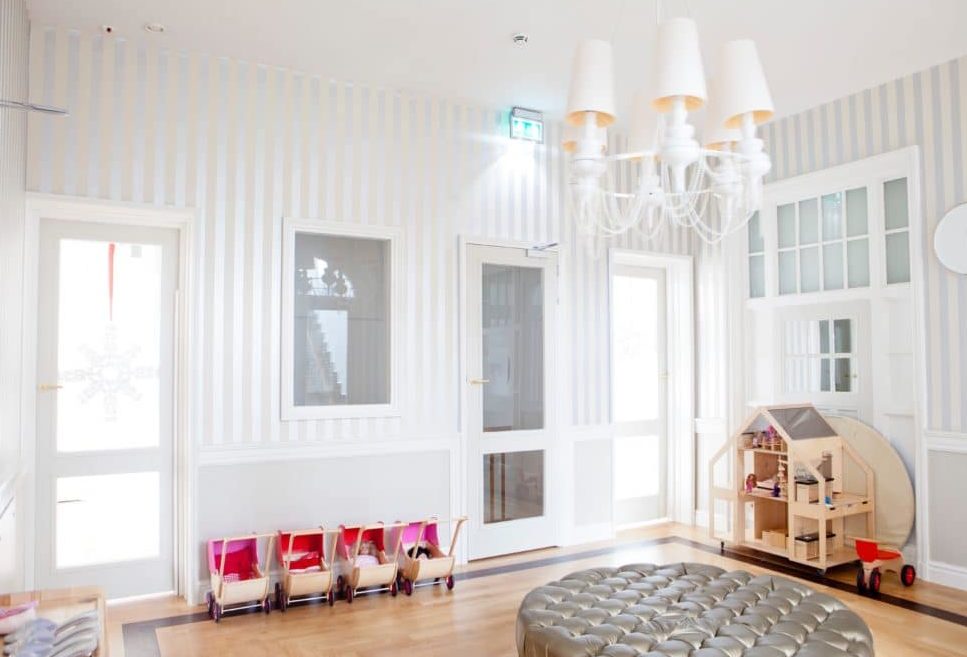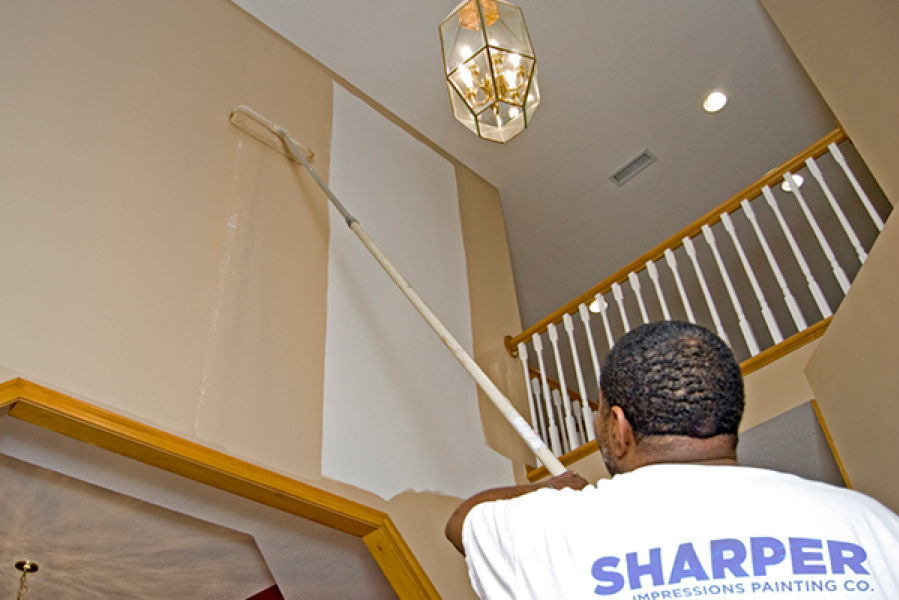When it comes to painting a room, one common question that pops up is, “Is it best to paint walls or woodwork first?” Well, let’s dive right in and find out the answer! You might be wondering why this question even matters, but trust me, it can make a big difference in the outcome of your painting project.
Now, picture this: you’re standing in a room with a paintbrush in hand, ready to transform the space. But where do you start? Should you tackle the walls first or focus on the woodwork? Don’t worry, my young DIY enthusiast, I’ve got your back! In the next few paragraphs, we’ll explore the pros and cons of each approach and help you decide the best strategy for painting like a pro.
So, grab your overalls, put on your thinking cap, and let’s embark on this colorful journey together. By the end, you’ll be armed with the knowledge you need to make the right decision when it comes to painting walls and woodwork. Let’s get started and unleash your inner Picasso!

Is It Best to Paint Walls or Woodwork First?
When it comes to painting a room, a common dilemma arises: should you start by painting the walls or the woodwork first? This decision can greatly impact the efficiency and overall quality of your paint job. To help you make the best choice, we will explore the pros and cons of both approaches and provide practical tips to ensure a smooth and successful painting experience.
The Benefits of Painting Walls First
One of the main advantages of painting walls before tackling the woodwork is the ease of application and the ability to achieve clean edges. By starting with the walls, you can work more freely without the worry of accidentally getting paint on the woodwork. This allows for a more relaxed painting experience, where you can focus on creating a smooth and consistent color on the walls.
Additionally, painting walls first saves you the hassle of taping off the woodwork. With the walls already painted, you can use a steady hand and a high-quality brush to cut in along the edges, ensuring a sharp and precise finish. This method is particularly beneficial if you are working with intricate woodwork details or if you prefer a crisp contrast between the walls and the wood.
Another advantage of painting walls first is that it allows for greater flexibility in terms of color choices. By establishing the wall color as a base, you can easily select complementary or contrasting shades for the woodwork. This opens up a wide range of design possibilities and makes it easier to create a cohesive and visually appealing room.
The Benefits of Painting Woodwork First
While starting with the walls may have its advantages, there are also compelling reasons to consider painting the woodwork first. One of the main benefits is the ability to work with optimal precision. By painting the woodwork before the walls, you can give it your undivided attention and take the time to achieve a flawless finish.
Painting woodwork first can also help protect the freshly painted surfaces. If you plan on using ladders or scaffolding to reach high areas, painting the woodwork first provides a solid foundation for your equipment. This reduces the risk of accidentally bumping into or smudging the freshly painted walls, minimizing the need for touch-ups and ensuring a seamless result.
Furthermore, painting the woodwork first allows you to better plan your paint job. By establishing the color and finish on the woodwork, you can easily match or coordinate the wall color to create a cohesive look. This can be particularly advantageous if you have specific color preferences or if you are working with existing furniture and decor that you want to complement.
Painting Walls First: Tips and Tricks
If you decide to start with the walls, here are some useful tips to make the process smoother:
- Clean and prepare the walls thoroughly before painting to ensure a smooth application.
- Use high-quality brushes and rollers to achieve a professional-looking finish.
- Consider using a paint sprayer for larger rooms or to expedite the process.
Painting Woodwork First: Tips and Tricks
If you choose to paint the woodwork first, keep these tips in mind:
- Take the time to properly prep the woodwork by sanding, filling any holes, and priming if necessary.
- Use painter’s tape to protect the woodwork from accidental paint splatters.
- Consider using a high-quality trim paint for a durable and long-lasting finish.
Choosing the Best Approach for You
Ultimately, the decision of whether to paint walls or woodwork first depends on your personal preferences, the condition of the surfaces, and the desired outcome. Both methods have their advantages and can contribute to a successful paint job.
To make the best choice, consider the complexity of the woodwork, the desired color scheme, and the level of precision you are comfortable with. It can also be helpful to consult with a professional painter or seek guidance from knowledgeable experts at your local paint store.
Whatever approach you decide to take, remember to prioritize proper preparation, use high-quality materials, and take your time to ensure a flawless and long-lasting finish. By following these guidelines and considering the specific needs of your project, you can achieve stunning results and transform your space with a fresh coat of paint.
Key Takeaways: Is it Best to Paint Walls or Woodwork First?
– Painting the walls first allows for easier touch-ups and ensures a seamless finish.
– Prioritizing the woodwork first avoids accidental paint splatters or drips on the freshly painted walls.
– It is recommended to start with the woodwork if you’re working with intricate details or delicate surfaces.
– Painting the walls first can help with efficient masking and protection of the woodwork during the process.
– Ultimately, the decision depends on personal preference and the specific project requirements.
Frequently Asked Questions
When it comes to painting, one common question is whether it’s best to paint walls or woodwork first. To help you make an informed decision, we’ve put together a list of frequently asked questions on this topic.
1. Should I paint the walls or woodwork first?
It’s generally recommended to paint the walls first before moving on to the woodwork. This allows you to focus on the larger areas and prevents accidental drips or smudges on the finished wood surfaces.
By painting the walls first, you can freely tackle any touch-ups or mistakes without worrying about damaging the newly painted woodwork. Plus, this method allows for more flexibility when it comes to cutting in the edges between the walls and the woodwork, ensuring a neater, professional-looking finish.
2. Can I paint the woodwork before the walls?
Yes, you can choose to paint the woodwork before the walls, but it may require some extra precautions. If you decide to go this route, make sure to cover the freshly painted woodwork with tape or protective sheets to prevent any accidental damage while painting the walls.
Keep in mind that painting the woodwork first can be more time-consuming since you’ll need to be extra careful not to smudge the fresh paint while working on the walls. It’s also important to be extra cautious when applying tape or sheets to avoid peeling off the newly painted woodwork.
3. What are the advantages of painting the walls first?
Painting the walls before the woodwork offers several advantages. Firstly, it allows you to focus on the larger areas, making the process quicker and more efficient. Secondly, it reduces the risk of accidental drips or smudges on the finished wood surfaces.
Additionally, by painting the walls first, you have the freedom to touch up any imperfections without worrying about damaging the newly painted woodwork. This method also provides better accuracy when cutting in the edges between the walls and the woodwork, resulting in a more polished and professional-looking finish.
4. Is there a specific order to follow when painting walls and woodwork?
While it’s generally recommended to paint the walls before the woodwork, there’s no strict rule that must be followed. Ultimately, the order depends on your personal preferences and the specific project at hand.
If you decide to paint the woodwork first, take extra precautions to protect the freshly painted surfaces while working on the walls. Conversely, if you paint the walls first, be mindful of accidental smudges or drips on the woodwork when you move on to that stage of the project.
5. Can I hire a professional to paint my walls and woodwork?
Yes, hiring a professional painter can be a great option if you’re not comfortable or don’t have the time to tackle the project yourself. A professional painter will have the expertise, tools, and experience needed to ensure a high-quality finish on both the walls and woodwork.
Before hiring a professional, make sure to do your research, read reviews, and ask for recommendations. This will help you find a reliable and skilled painter who can transform your space with precision and efficiency.

Summary
So, when it comes to painting walls or woodwork, it’s best to start with the woodwork. This is because it can be easier to paint the walls neatly after the woodwork is done. Plus, if you accidentally get some paint on the walls while painting the woodwork, it’s easier to fix. Just remember to protect your floors and furniture while you paint!
Once the woodwork is finished, you can move on to painting the walls. You’ll have a smoother and more professional-looking result, and you won’t have to worry about getting paint on the freshly painted woodwork. So, take it step by step, starting with the woodwork and then moving on to the walls, and you’ll have a beautifully painted room in no time!
